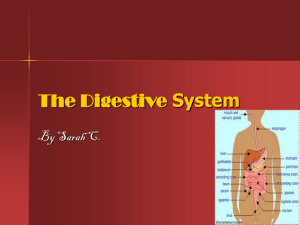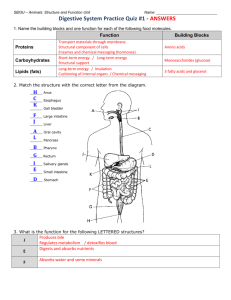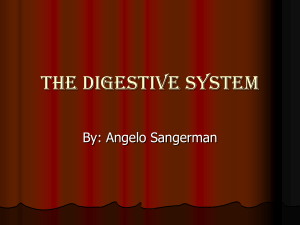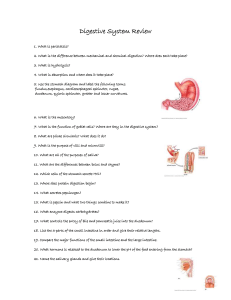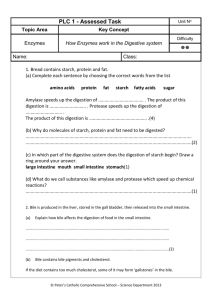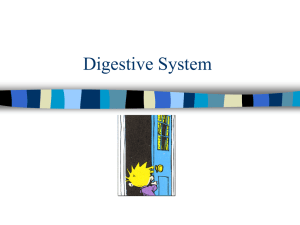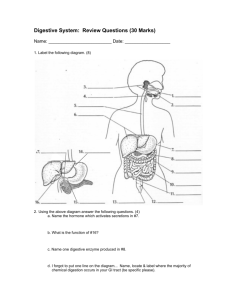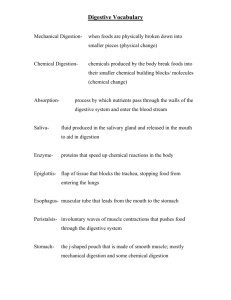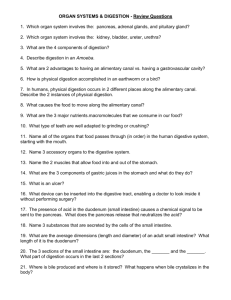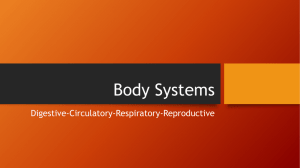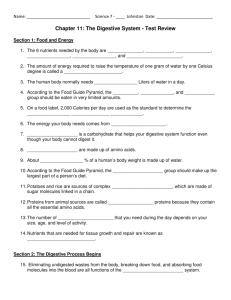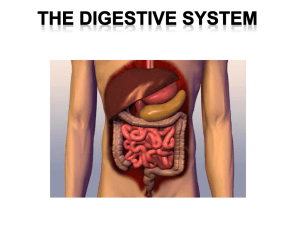Digestive System Review Sheet KEY
advertisement
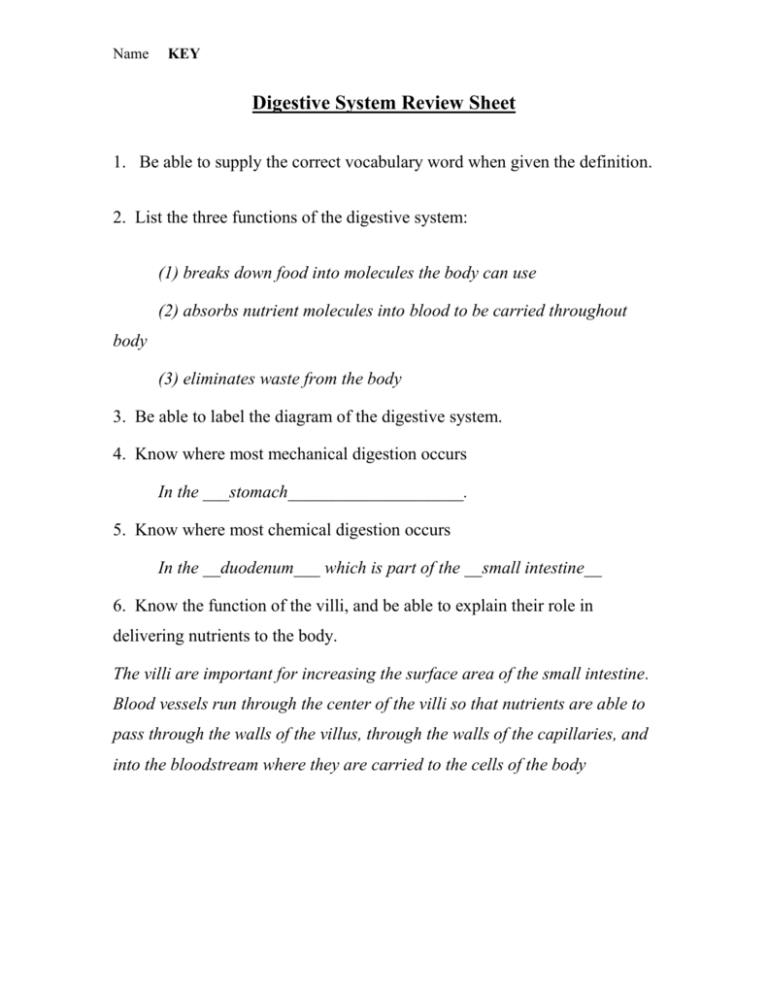
Name KEY Digestive System Review Sheet 1. Be able to supply the correct vocabulary word when given the definition. 2. List the three functions of the digestive system: (1) breaks down food into molecules the body can use (2) absorbs nutrient molecules into blood to be carried throughout body (3) eliminates waste from the body 3. Be able to label the diagram of the digestive system. 4. Know where most mechanical digestion occurs In the ___stomach____________________. 5. Know where most chemical digestion occurs In the __duodenum___ which is part of the __small intestine__ 6. Know the function of the villi, and be able to explain their role in delivering nutrients to the body. The villi are important for increasing the surface area of the small intestine. Blood vessels run through the center of the villi so that nutrients are able to pass through the walls of the villus, through the walls of the capillaries, and into the bloodstream where they are carried to the cells of the body Name KEY 7. Know what organs are responsible for the digestion of starch, proteins, and fats. [organ name in this column] Starch Protein Fat Mouth Saliva Pepsin Stomach Produces bile Liver Pancreas Makes enzymes Makes enzymes Duodenum Makes enzymes Broken up Broken down Broken down Broken down 8. Know the order of the organs in the digestive tract, and what each organ does. Organ Teeth and tongue Function *Teeth cut (incisors), tear (canines) and grind (molars) *Tongue helps in chewing and tasting, and moves food to the esophagus Name KEY Salivary glands *Makes saliva that moistens food into one slippery mass (a bolus) *Enzymes in saliva begin to break down the starch in food (the enzyme is amylase) Epiglottis * Flap of cartilage that closes over the windpipe *Prevents food from entering and causing choking Esophagus * A muscular tube connecting the mouth to the stomach *Peristalsis moves food through the esophagus (takes 5-10 seconds) Stomach * most mechanical digestion happens here * some chemical digestion happens too: pepsin and hydrochloric acid break down proteins * soupy mixture of broken up food is called chyme * sphincter between stomach and duodenum releases a little chyme at a time into the duodenum Liver *Produces bile, breaks down medicine, eliminates nitrogen Gallbladder *stores and concentrates bile ( a substance that breaks up large fat globules into smaller droplets) * releases bile into the duodenum through the bile duct Name KEY Pancreas * produces enzymes that flow into the duodenum where they break down fat, starch, and protein Duodenum *beginning part of the small intestine * most chemical digestion happens here * chyme mixes with bile from the gallbladder and enzymes from the pancreas Small Intestine * most chemical digestion happens here (in the duodenum) * nutrient absorption happens here * nutrients are absorbed through millions of tiny villi Large Intestine * water is absorbed into the bloodstream *bacteria feed on feces (waste), produce vitamins including Vitamin K Rectum and Anus * waste material is compressed into solid form in the rectum * waste material is eliminated from the body through the anus
